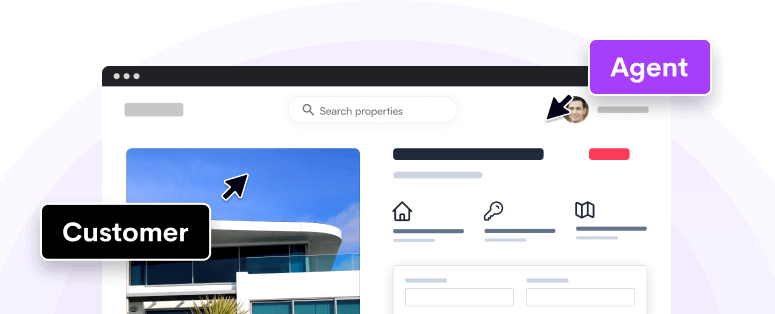If 1 in every 8 people you emailed went and bought your product you'd know how
many emails to send to reach your target. You wouldn't worry as much about the
7 who didn't reply. When I first started I had no idea what the conversion
rate for content marketing should be and I kept making changes to my posts
rather than moving on to the next one. Below we'll show you Upscope's blog
conversion rate and the sales conversion rates of two other companies.
Related: SaaS metrics for 40 companies as examples
Read if: You Need to Do SEO but Hate it the
Idea
1. Upscope blog to subscriber conversion rates
Below we cover only the identifiable people coming from the blog and
signing up for one specific day.
Right now around 600 people per day come to the blog and around 120 come to
the main Upscope site from both the blog and other sources.
573 people came to the blog on Tuesday 5th March 2019
They arrived at one of the top 20% of our posts that appear to be drawing
in 80% or more of the relevant traffic. In short, a few great posts that rank
well on Google do better than a 100 that don't.
The blog post that converts most people to the Upscope main website is not the
one that gets the most traffic, it's actually 12th in terms of traffic volume.
It's a list of smart hacks for
Intercom of which Upscope is one
of the hacks.
26 clicked through to the main Upscope landing page from these blog
articles.
3 of those 26 signed up. I'm counting those who are shown as coming
directly from the blog and signing up on that day. We know that there are
plenty of people who read a blog post then come back and read it again a week
later, then 2 weeks after that they'll finally click through to the main
Upscope landing page and then sign up. This happens often and we have no good
way of tracking this fully yet but we have watched individual journeys via
https://oribi.io.
In short, the blog has far more impact than we give it credit for.
1 in 3 of those signups will typically convert into a buyer (well, it
varies depending what sort of company signed up as some find they really need
Upscope and others are like "meh". So it's not precisely 1 in 3 but it's in
that range or lower so 1 in 3 to 1 in 5). The size of companies vary greatly.
One of those sign ups could be worth 30+ of the smaller ones because we price
per seat.
Where else are people arriving to our main landing page from?
120+ people come to the main Upscope landing pages each day.
They're coming from:
-
Direct Google searches for terms like co-browsing.
-
From integrations listings on platforms like Intercom, LiveChat.
-
Word of mouth referrals and 3rd party posts written about Upscope.
-
Maybe from Capterra reviews of Intercom that mention Upscope though
these are hard to measure.
Quite a few are difficult to track as they might have seen us on mobile, then
checked us out directly on desktop.
The larger companies often have a buying team or process where they evaluate a
number of companies and so might find us from a list of similar tools, it's
hard to say.
What's the biggest recent changes we made to impact the conversion?
A. We updated home page video to show a real person
talking and the click through has gone from 4% to 23% BUT the previous
video link was a button you had to click rather than a big obvious video so
it's not a great comparison but a good lesson.
That said, this new video works better than anything else I've seen because
the person is talking and you feel compelled to click the 'enable audio'
button to hear it. If you want to make your own explainer video for your SaaS
or software company, here's how we did
it.

home page video auto-plays and has a click to enable
button
B. I used Oribi content marketing
analytics
tool to improve our top blogs which increased clicks from the blog to the main
product by 20%+ in a short space of time. I used Oribi to focus on refining
the top 20% of posts that were having the greatest impact. Here's a step by
step breakdown of how it was
done.
2. PhoneWagon daily sales metrics
PhoneWagon shared their stats on outbound calls to sales made:
100 dials
First, we start off with outbound sales cold calls. To feed our sales funnel
we have to make 100 dials a day****.****
14 decision makers reached
When we reach one of these 14 decision makers a day
4 demos set
Out of those 14 decision makers we will be able to set 4 demos.
3 demos show
Now of those 4 demos that got set, not all of them are going to show
up. It is important to follow up with the person you set the demo with to
confirm they are coming.
1 sale made
Right now our close-rate is about 30–35%. That’s generally considered
about average for a SaaS company today. So of those 3 demos we perform, we
will make 1 sale.
+$200 MRR
They make $200 new MRR per day from 100 dials.
3. Reply.io's sales funnel for quality leads
Reply.io is an email sales tool and below they show their
stats.
Below, the response rates are for qualified leads and after extensive testing
of subject headers and templates. In other words, they know what they're
doing.
STEP 1 (quality leads rate)
After the initial contact:
-
Open rate: 50-80%
-
Reply rate: 20-25%
-
Interested after reply: 2-5%
STEP 2 (leads-to-opportunity ratio)
Next, these 20-50 sales quality leads should convert into sales opportunities.
Here it all depends on how the sales process is set up. Approximately, the
lead-to-opportunity ratio is no higher than 20%.
In other words, 20% of those 20-50 quality leads will give you 4-10
opportunities.
STEP 3 (opportunity-to-sale ratio)
The last stage would be to close deals, and that’s where the
opportunity-to-sale ratio steps in. It should be something around 15-25%.
So, those 4-10 opportunities will become your 1-3 customers.
See more on Reply's conversion
rates
How this ties into other SaaS metrics like CAC
When you have product market fit and you have sales and marketing up and
running, then you can think about things like LTV to CAC ratio and other
startup metrics.
LTV to CAC ratio did not mean much to us before and it still has little
relevance in our day to day work but it's useful as a double check on whether
we are pushing fast enough so here's a simple breakdown of key SaaS metrics
with real examples.






